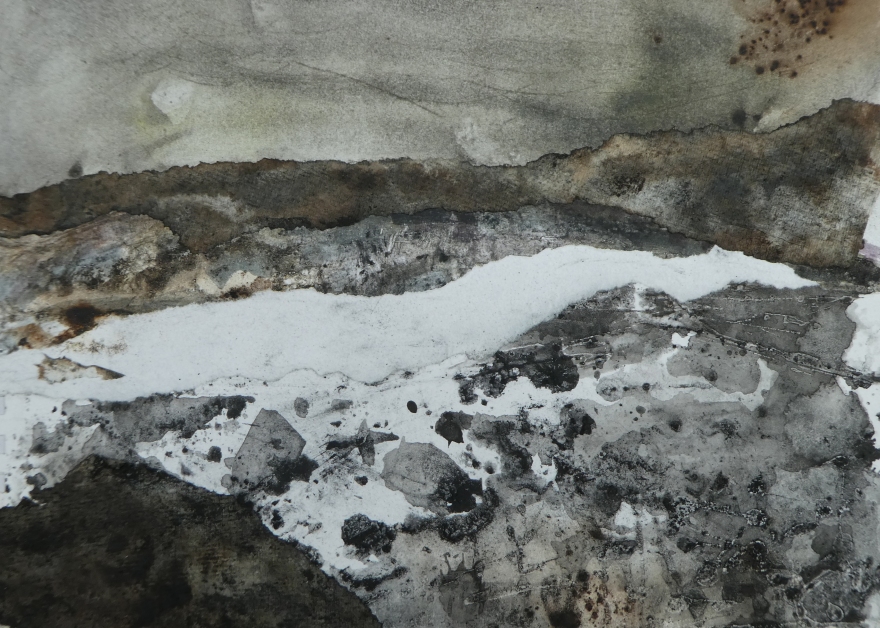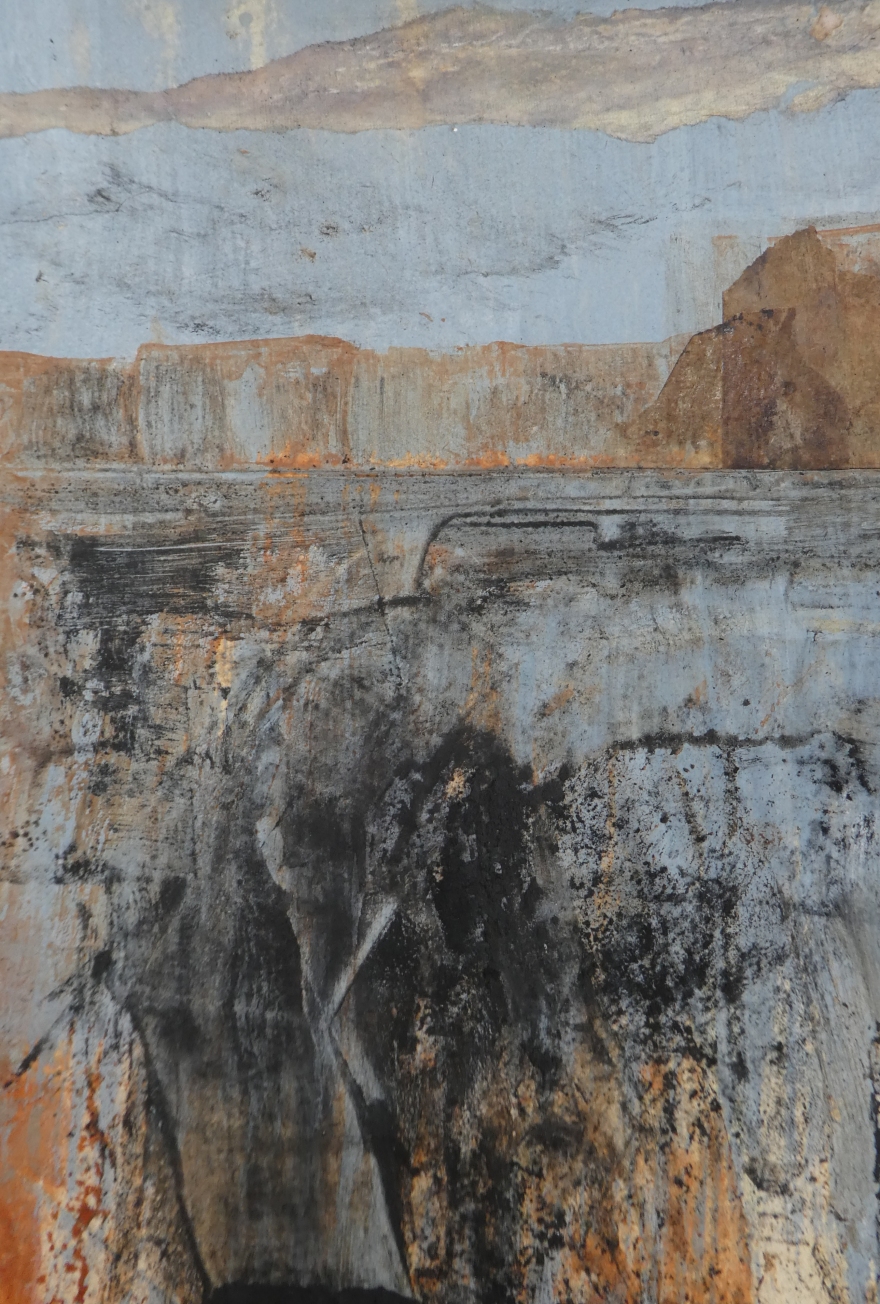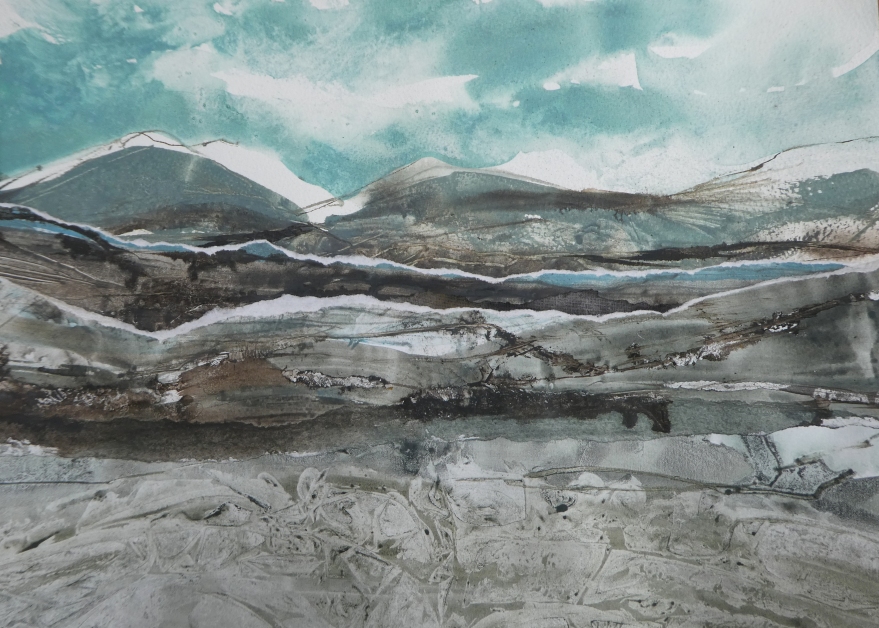As you know, I like to collect “rubbish” from the beach. They say beauty is in the eye of the beholder, and, for me, beauty comprises colour, texture, and composition that appeals to the eye. Most definitions of art include the need for human intervention. In the example below, fire and water have done the intervening.
This is the found item on the beach. It is about 10″ x 7″, weighs 270g and is quite fragile. I first saw the dark surface and then turned it over:
I was immediately drawn to this item. I love the complexity of texture that has been formed quite randomly by the bonfire. I could keep looking at it for ages and keep seeing different areas of interest. There are layers upon layers and whilst it has clearly been burned, there are areas of colour in addition to the expected black and white. It is very much in tune with my colour palette.
I have recently bought a book by the American collage artist Crystal Neubauer called “The art of Expressive Collage”. This extract is from the Introduction: The intuitive artist is the artist who trusts what her eye tells her is good. She allows for the fact that she has a story to tell through art, but lets go of the notion that the story will be known before she starts working.” And, in Chapter 1, “Do not stop to question why something has caught your eye. If it has your attention there is a reason for it.” This exactly echoes how I feel about my found pieces. But what next? First of all, here are the pieces again:
How much better they look without the visual distraction of the stones! My constant dilemma is to ask myself “Is that enough?” and whilst I consider this found item to be a thing of beauty, going back to the definitions of art such as “The expression or application of human creative skill and imagination, typically in a visual form such as painting or sculpture, producing works to be appreciated primarily for their beauty or emotional power.” (OE) it does not fulfil these parameters because, as yet, there has been no human intervention (or at least none taken with an intention of creating art).
The two sides of the piece are, of course, different and I cannot choose one over the other. The darker side is reminiscent of bark with some lichen growing in places. The other side includes a bit of seaweed, some metal, a twig, and plastic, foam and melted surfaces can be discerned – it reminds me of lava and also termite nests.
I would like to display this so that both sides can be seen – perhaps mounting it in a perspex box. The question is – how, if at all, to add my intervention? Assuming that the piece is displayed in a box, any background pattern would be too distracting unless it was very lightly done. Perhaps a subtle pale distressed finish would be appropriate but it would have to be done in such a way as to leave the object unobscured from both sides. Then there is the question of securing it within a box format – I can imagine it suspended but how to get anything through the structure would be a challenge. Maybe having it on a stand would be a safer option – it cannot stand on its own as it is and I would not want to push one end into a support as it would no longer be seen.
This is puzzle to ponder over a while longer. I may decide to stick with displaying just one face of the item and that would make the presentation a much easier process. Any thoughts gratefully received!
I’ll let you know what I decide. I’ll be seeing our framer next week and he may well have some ideas too.














 And finally, this one, compiled from three pieces which I did whilst on holiday in Scotland last year. I had quickly dashed off a series of three sketches – I liked the immediacy and vibrancy of the marks but each felt incomplete. Remembering what I had been told by Cas Holmes last year, I threw caution to the wind, tore the pieces up and reassembled them – there they are before and after:
And finally, this one, compiled from three pieces which I did whilst on holiday in Scotland last year. I had quickly dashed off a series of three sketches – I liked the immediacy and vibrancy of the marks but each felt incomplete. Remembering what I had been told by Cas Holmes last year, I threw caution to the wind, tore the pieces up and reassembled them – there they are before and after:



